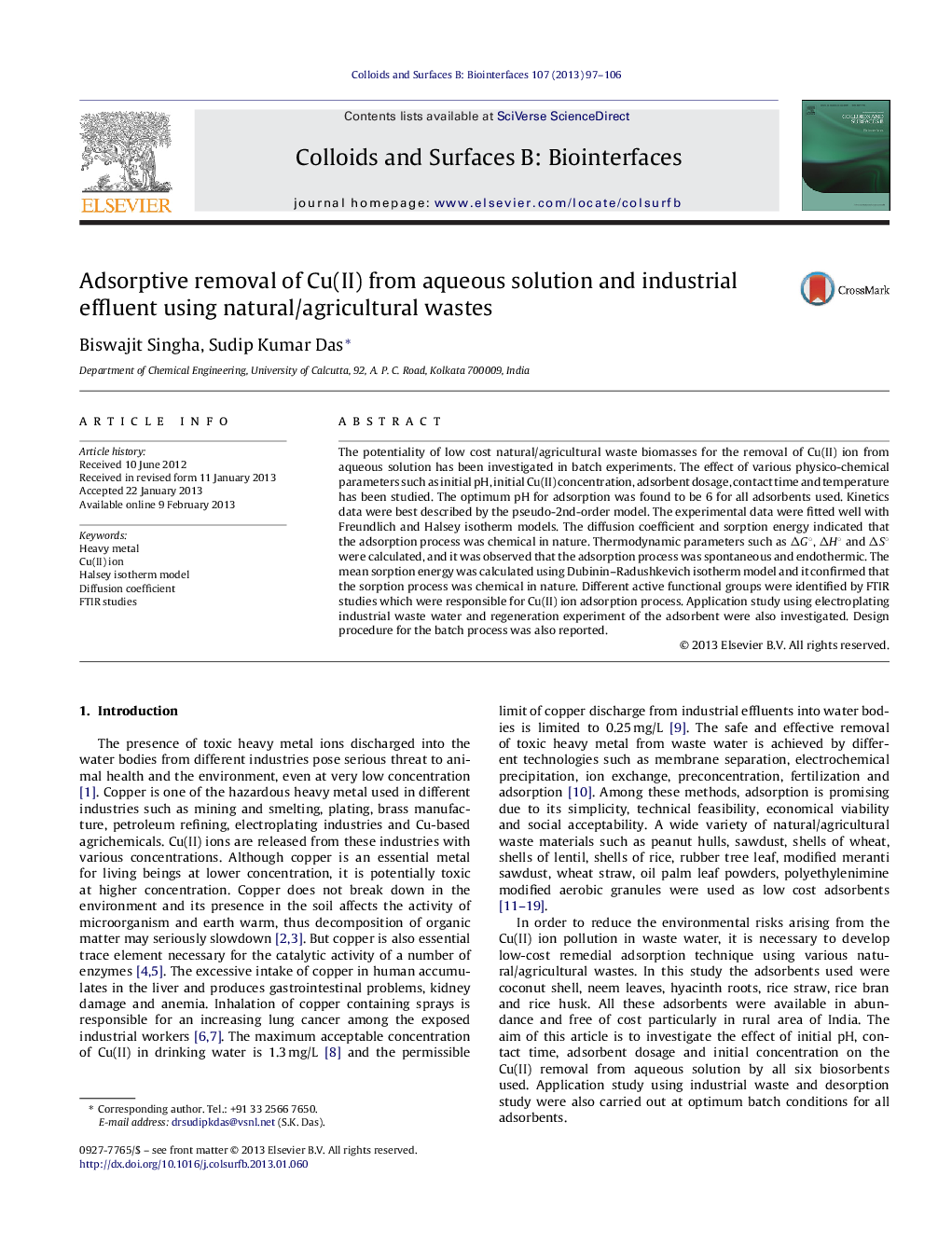| Article ID | Journal | Published Year | Pages | File Type |
|---|---|---|---|---|
| 600126 | Colloids and Surfaces B: Biointerfaces | 2013 | 10 Pages |
The potentiality of low cost natural/agricultural waste biomasses for the removal of Cu(II) ion from aqueous solution has been investigated in batch experiments. The effect of various physico-chemical parameters such as initial pH, initial Cu(II) concentration, adsorbent dosage, contact time and temperature has been studied. The optimum pH for adsorption was found to be 6 for all adsorbents used. Kinetics data were best described by the pseudo-2nd-order model. The experimental data were fitted well with Freundlich and Halsey isotherm models. The diffusion coefficient and sorption energy indicated that the adsorption process was chemical in nature. Thermodynamic parameters such as ΔG°, ΔH° and ΔS° were calculated, and it was observed that the adsorption process was spontaneous and endothermic. The mean sorption energy was calculated using Dubinin–Radushkevich isotherm model and it confirmed that the sorption process was chemical in nature. Different active functional groups were identified by FTIR studies which were responsible for Cu(II) ion adsorption process. Application study using electroplating industrial waste water and regeneration experiment of the adsorbent were also investigated. Design procedure for the batch process was also reported.
Graphical abstractFigure optionsDownload full-size imageDownload as PowerPoint slideHighlights► Applicability of natural/agricultural wastes have been used for the removal of Cu(II) ions from aqueous solution. ► Kinetics and isotherm studies have been reported. ► Thermodynamic study indicated that the sorption processes are spontaneous and endothermic in nature for all the adsorbents. ► Batch process design for scale up purpose is incorporated. ► Mechanism of adsorption process is reported based on FTIR analysis for all adsorbents.
